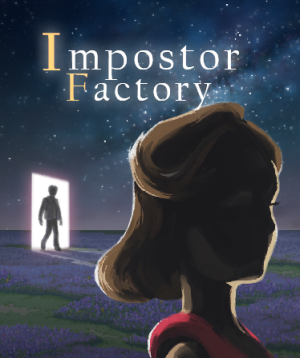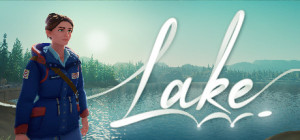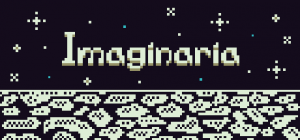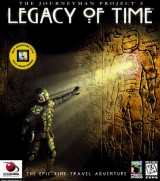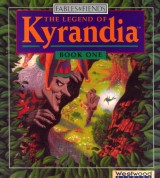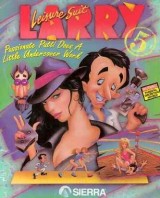Review for Chasing Static
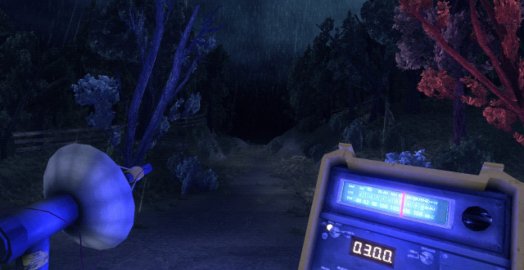
While playing Chasing Static I couldn’t stop thinking of Penumbra, the 2006 tech demo that put Frictional Games on the map. Penumbra is little more than a historical footnote now, overshadowed by its commercially released namesake and the studio’s later successes, but that freeware proof-of-concept paved the way for such classics as SOMA and the Amnesia series. In one sense the parallels with Chasing Static are clear: this, too, is a small-scale, concept-heavy journey to a dark, unfriendly place, the work of independent developers who understand how to create a palpable sense of interactive dread. That said, there’s another, less flattering connection one could draw: both are short, do more to showcase their ideas and mechanics than to tell a satisfying story, and neither feels like a full and rewarding game. The difference, of course, is that Penumbra was a free demo, and accomplished what it did within that framework; Chasing Static, on the other hand, positions itself as a complete experience, and despite its strengths it doesn’t quite deliver one.
Chasing Static casts you as Chris Selwood, a young man traveling by car through rural Wales. Not wanting to chance a vicious thunderstorm in his battered station wagon, he pulls into a roadside cafe to wait for the weather to clear. Chris is just settling in for some coffee and conversation with a friendly waitress when the power cuts out and everything turns to chaos; the waitress is attacked by something horrific with glowing eyes, and before Chris can react he blacks out. Everything is different when he wakes back up: the cafe seems musty and abandoned, as if no one’s been there for years, and there’s no sign of anyone or anything else.
Totally at a loss as to what’s going on or what to do and stranded by his creaky vehicle, Chris sets off into the nearby countryside to look for help. Instead he discovers a seemingly abandoned research facility, where the last remaining scientist makes contact via radio to inform him he’s in great danger. This whole region, it turns out, is home to a strange energy field that can take hold of a person’s mind, alter their perception of reality and ultimately drive them to violent madness. Unfortunately for everyone who was stationed here, the machinery they used to hold the force at bay broke down, with your remote guide the sole survivor of the resulting catastrophe. Chris’s only hope to escape with his sanity intact is to locate the containment equipment and bring it back online before he becomes another casualty of the mysterious presence.
Controlling Chris in first-person, you’ll explore three main locations in search of the malfunctioning mechanisms: the wrecked cafe and its surrounding environs, the abandoned village of Hearth, and the open moors surrounding a nearby lake. Aiding your search is a piece of experimental technology called the Frequency Displacement Monitoring Device, a sort of radio signal detector that represents the game’s centerpiece mechanic. One of the quirks of the landscape is that it sometimes “records” events as they happen, playing them back as eternally repeating visions or “echoes.” The FDMD detects the radio signals that mark these anomalies and lets you find the exact spots at which they’ll next re-materialize. The device consists of a directional microphone which you wield in one hand like a radar gun, and a display box held in the other, which lights up and produces the titular static when you’ve found a signal and indicates how close it is using a numerical meter.
You’ll need to find as many echoes as you can, as they’ll often contain information required to solve puzzles on your way to the downed machines. Many of these are inventory-based, and you’ll often know what you’re looking for but not where to find it; an echo might help you figure out where the previous owner left it. There are also obstacles you can only overcome with knowledge you’ve gleaned from particular echoes, such as which hotel room a certain person was staying in. You won’t learn a lot about the people involved—despite a few first names here and there, the subtitles name most characters “Unknown Male/Female”—but each vision will help you piece together some of the horrific events that transpired and their tragic consequences. You don’t have to find every echo to finish the game, but the more you do the more you’ll understand.
Undoubtedly the game’s greatest strength is its uneasy, haunting atmosphere, where the remnants of past horrors linger palpably in the air and darkness touches everything. Like Chris himself, you’ll rarely feel like you grasp the full import of what you’re seeing: clusters of strange glowing fungus dot the landscape without explanation; spectral apparitions come and go in the corner of your eye; and everywhere you run the risk of discovering another ruined, anonymous corpse, its killer long vanished. You yourself can’t die—or if you can I never found the way—but you’re constantly dogged by the sense that something horrible is about to happen to you. Worse, as the anomalies distort your understanding of reality, it may already be happening without your even realizing it.
The game is heavily influenced by original PlayStation-era horror titles, with its retro-styled 3D graphics clearly meant to evoke such classics as Resident Evil and (especially) Silent Hill. Rather than making the game feel dated, the low-poly look heightens the uncanny feeling hanging over everything. The character models with their blocky outlines and blurry features lend a dreamlike quality to conversations, and the gloom that hangs over everything keeps the rougher details in the shadows where they don’t stand out. Frightening sights, of which there are many, are rendered impressionistically, with just enough detail to make them effective, and the darkness is used strategically to let your imagination supply the most gruesome details.
Headware Games clearly realizes that any game centered on hunting down strange sounds necessarily lives and dies by its audio. The sound design naturally focuses on staticky sounds: the hiss of the radio, the FDMD’s hum, the buzzing whine of flies over carrion, the perpetual whispering murmur of the rain. It all adds up to a multilayered atmosphere, with sheets of oppressive menace seeming to push in from all directions with the misty darkness, the crackling soundscape reminding you that you’re surrounded on all sides. The droning, bass-heavy synth score amplifies the effect, blending in subtly with the ambient noise and never forcing itself obtrusively into the foreground.
The voice acting too is effective across the board, especially Chris himself, whose delivery carries a believable mixture of bewilderment, trepidation and weariness. Most of what happens in the echoes is communicated through dialogue—the ghostly figures populating them are flickering and indistinct, “moving” by transitioning from one static pose to the next—and the vocal work is such that you’ll never have trouble figuring out who’s doing what. There are only a handful of actual speaking characters, including several unnamed echo-figures, but the performances all work. (Some of the voice-overs within echoes sound distant and distorted, like you’re hearing them underwater; this adds to the otherworldliness of it but renders some phrases difficult to make out. Helpfully, the subtitles are on by default to prevent you missing anything.)
There’s support for both keyboard and gamepad controls, but Chasing Static was clearly designed with the latter in mind, in keeping with its console inspirations. You move Chris with the analog stick (or WASD), with dedicated buttons to interact with hotspot prompts as you approach them, to open your inventory, and to unholster the FDMD. (Rather pointlessly, you’ll have to bring the microphone and display box out separately, using two different buttons; it’s a befuddling choice, since neither does anything without the other.) At one point you’ll also come across an experimental sonic cannon that can supposedly dispel frightening or hostile manifestations—I never found a use for this, and the wraiths I blasted with it remained stubbornly un-dispelled.
All this is interesting, but while the echo-finding mechanic and the eerie presentation effectively demonstrate what the developer can do within the horror genre, I’m not sure the game does much of anything else. The story feels less like a complete narrative meant to be told in two hours and more like a skeletal frame meant to support a brief but thorough exhibition of this approach to horror and its attendant gameplay concepts. Details of what’s happened are vague and confounding, and it’s never really clear what Chris is up against or what happens if he fails. He has his immediate challenge to turn the machinery back on, but there’s little direction or fleshed-out larger context beyond that. We get just enough time with the concepts and characters to flip the required switches, and then after a brief conclusion the game is over.
Similarly, Chris’s character never develops beyond what’s necessary for him to look for the containment machines, and the game does little to make the story feel truly personal to him. A late development explains his deeper connection to the area and what occurred there, but it feels inorganic, unearned and (worst of all) nonsensical—a twist for its own sake. Locations like the lakeside and the moors are mostly empty aside from the details that make them function, and they’re much larger than they need to be; it’s easy to get lost and hard to figure out which specific areas you need to be searching in. Even the town of Hearth, whose exteriors are impressively menacing, is mostly just a series of twisty streets without a lot of interactivity to break them up. For much of the game you’ll simply repeat the “look for echo, find echo, look for object/next echo” process, and there’s no attempt to disguise the repetitive simplicity of it.
None of which is to say the game is bad—just that it feels a bit like an appetizer for a meal that never comes. Headware seems to have anticipated this criticism, placing the emphasis on Chasing Static as a “short story” in promotional materials, but having played the game this feels like a marketing dodge; the best short stories are justified in their brevity, requiring only so long to make their point and conclude, and Chasing Static doesn’t pull that off. What’s offered here doesn’t feel like a full game so much as a managed introduction to a series of concepts and mechanics. There’s a lot of potential on offer, but the focus is less on the experience you’re having now than on the promise it shows. I expect that with more resources the developers could produce something truly special; there’s a lot this game does well that could easily support a longer, deeper treatment if given the chance. For now, though, Chasing Static is what we have, and though it shows great potential it’s not entirely satisfying on its own.



_capsule_fog__medium.png)





